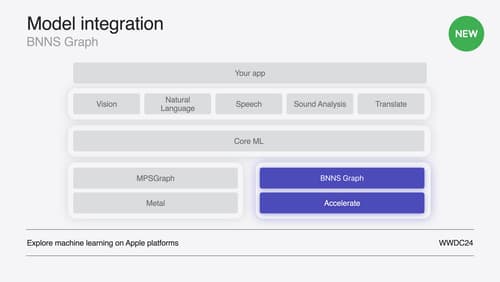how do I create a custom macro or dsl
Asked on 2024-07-30
1 search
To create a custom macro or DSL (Domain-Specific Language) in Swift, you can leverage several powerful language features such as result builders and macros. Here are the key points and resources from WWDC sessions that can help you get started:
-
Result Builders:
- Result builders allow you to express complex values declaratively. They take a closure in which a special, lightweight syntax is used to incrementally build up a resulting value.
- This feature has been used to build native UI frameworks, web page generators, and more in the Swift standard library.
- For more details on result builders, you can watch the session "Write a DSL in Swift using result builders."
-
Macros:
- Macros in Swift act as compiler plugins. They take the syntax tree as input and return transformed code as output.
- Macros are very flexible and can be used to create custom transformations and code generation.
- For more details on macros, you can watch the session "Expand on Swift macros."
Here are the relevant sessions mentioned:
-
A Swift Tour: Explore Swift’s features and design
- A Swift Tour: Explore Swift’s features and design (26:04)
- This session provides an overview of result builders and macros, and suggests watching specific sessions for deeper dives into these topics.
-
Write a DSL in Swift using result builders
- This session is recommended for learning more about how to use result builders to create a DSL in Swift.
-
Expand on Swift macros
- This session is recommended for learning more about how to use macros in Swift.
By exploring these sessions, you can gain a deeper understanding of how to create custom macros and DSLs in Swift.

What’s new in SwiftData
SwiftData makes it easy to add persistence to your app with its expressive, declarative API. Learn about refinements to SwiftData, including compound uniqueness constraints, faster queries with #Index, queries in Xcode previews, and rich predicate expressions. Join us to explore how you can use all of these features to express richer models and improve performance in your app. To discover how to build a custom data store or use the history API in SwiftData, watch “Create a custom data store with SwiftData” and “Track model changes with SwiftData history”.

Support real-time ML inference on the CPU
Discover how you can use BNNSGraph to accelerate the execution of your machine learning model on the CPU. We will show you how to use BNNSGraph to compile and execute a machine learning model on the CPU and share how it provides real-time guarantees such as no runtime memory allocation and single-threaded running for audio or signal processing models.

Platforms State of the Union
Discover the newest advancements on Apple platforms.
